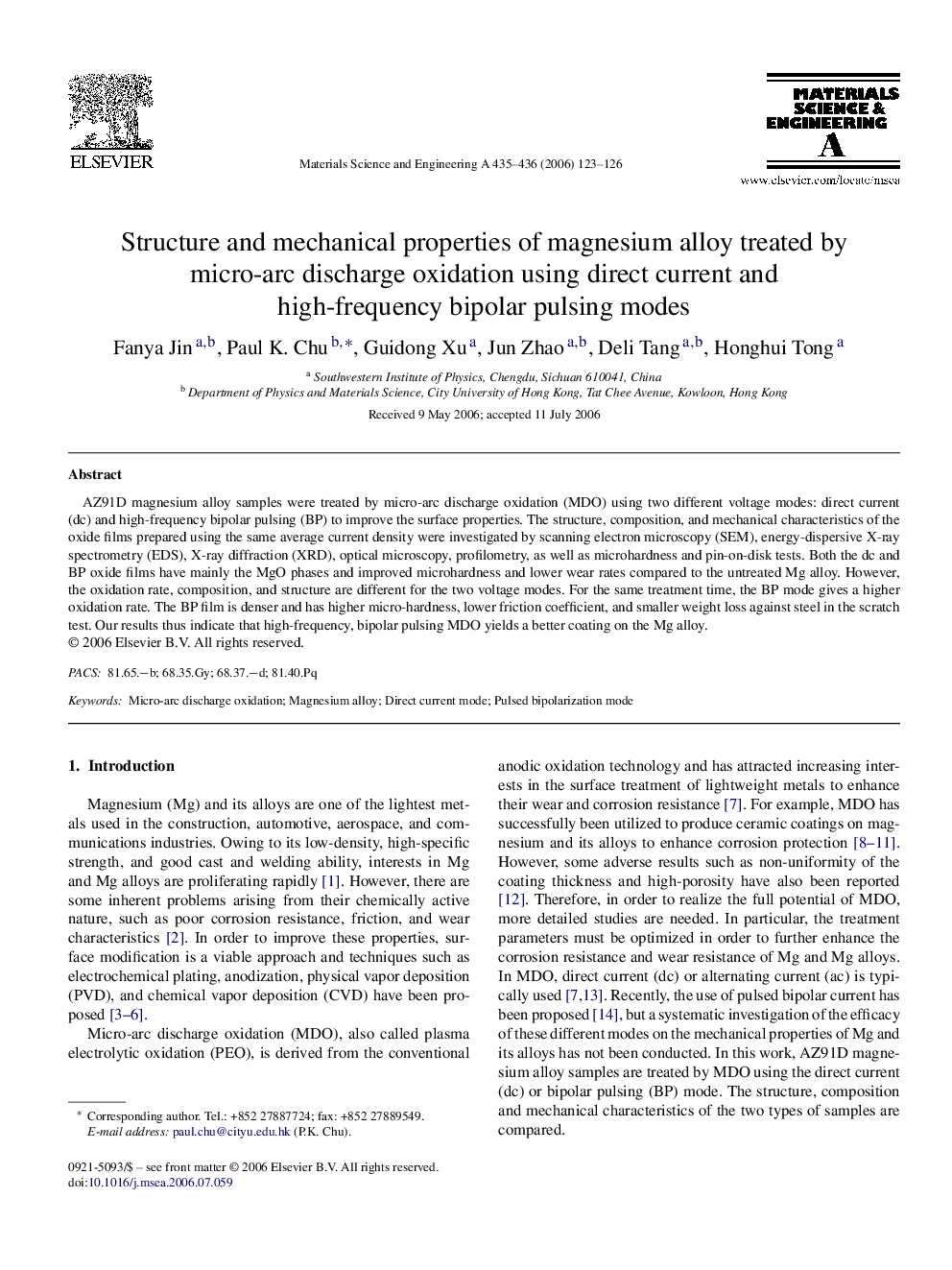| Article ID | Journal | Published Year | Pages | File Type |
|---|---|---|---|---|
| 1585109 | Materials Science and Engineering: A | 2006 | 4 Pages |
AZ91D magnesium alloy samples were treated by micro-arc discharge oxidation (MDO) using two different voltage modes: direct current (dc) and high-frequency bipolar pulsing (BP) to improve the surface properties. The structure, composition, and mechanical characteristics of the oxide films prepared using the same average current density were investigated by scanning electron microscopy (SEM), energy-dispersive X-ray spectrometry (EDS), X-ray diffraction (XRD), optical microscopy, profilometry, as well as microhardness and pin-on-disk tests. Both the dc and BP oxide films have mainly the MgO phases and improved microhardness and lower wear rates compared to the untreated Mg alloy. However, the oxidation rate, composition, and structure are different for the two voltage modes. For the same treatment time, the BP mode gives a higher oxidation rate. The BP film is denser and has higher micro-hardness, lower friction coefficient, and smaller weight loss against steel in the scratch test. Our results thus indicate that high-frequency, bipolar pulsing MDO yields a better coating on the Mg alloy.
